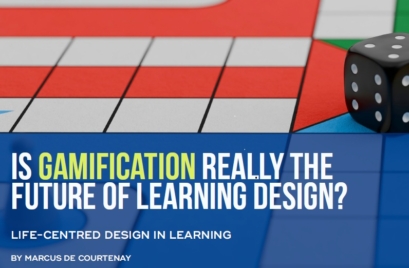
Agile is one of the most revolutionary business models in the last twenty years. It is liberating organisations from vertical, siloed leadership, and fixed mindsets, and freeing them to be more innovative and adaptive. In 2020, it was calculated that 85% of software developers are using Agile strategies and techniques.
Yet, when we look closer, we are seeing many Agile transformations flounder – they’re easy to talk to, but tougher to implement.
Organisations often fall into the trap of seeing Agile as a set of practices, and not a fundamentally new mindset.
So how do we close the gap between methodology and mindset?
The Problem with “Doing Agile”
Many organisations leap straight into transforming structures, processes, practices, and workflow, without giving enough focus to the deeper human change required to support the shift. In these instances, organisations are “doing” Agile, without first “being” Agile. Teams may perform stand-up meetings and use Post-it notes, but their efforts will fail to have impact if they lack the flexibility, decision-making authority, and other support necessary to refine and implement their ideas.
This haphazard application of Agile methodologies, without a true shift in mindset, will not be supported by the broader organizational structure and culture. It can also lead to Agile ways of working being undermined by legacy systems. A historically siloed organization moving to Agile can experience unhealthy competition across teams, and the encroachment of bureaucratic power structures and incentives into Agile team processes.
Bureaucracy and Agile have been described as oil and vinegar – though the two can complement each other, they don’t mix easily. Bureaucracy is powered by entrenched top-down, authoritarian principles that are counter-intuitive to Agile’s innovative, fast-paced mindset. Yet, operations
(run by bureaucracies) and innovation (a key component of Agile) are “interdependent, mutually beneficial capabilities.” Many organisations are seeking to implement hybrid structures, combining Agile development with bureaucratic operations. However, without fully understanding and adopting the Agile mindset, they fail to appreciate the trade-offs and challenges that inevitably arise at the interfaces.
What Could Be Underpinning This Problem?
This trend towards faux Agile practices can possibly be traced back to a lack of clarity around the notion of an Agile mindset.
What, exactly, is it? And how do we develop and embed it in our organisation?
Some leaders equate an Agile mindset with a Growth Mindset, which advocates that abilities can be developed. Others view it as a way to analyse issues and characterise problems. And some believe that leaders may adopt multiple mindsets at once e.g., Lean, Agile, Waterfall.
This ambiguity gives leaders the creative freedom to interpret Agile in ways that best suit them, relabelling what they are already doing as “Agile” without changing anything, making Agile teams subordinate to bureaucracy, and using Agile as a euphemism for layoffs.
To provide some clarity among this confusion, an Agile mindset is best described as a culture or set of attitudes that support an Agile work environment.
These attitudes may include:
- Embracing diversity – consciously increasing your respect factor
- Seeing failures as opportunities – employing a growth mindset
- Being transparent with communication and information – encouraging collaboration
- Being accountable – being self-organising and taking pride in both yours and the team’s work
- Flexibility – being ready to adapt to customer and stakeholder needs
- Fostering learning – through experimentation and small risks
These Agile attitudes are underpinned by the
principles that give meaning to the concepts and practices. So, to successfully work in an Agile way, we need to understand the principles first.
Agile Principles
Principles are foundational truths, which individuals and organisations can use to guide behaviours, underpin decisions, and inform the design of frameworks – such as processes, systems, and methods etc. Without guiding principles, any change we make at an individual or organisational level will either be surface level or hard to replicate across large organisations.
To enact the Agile mindset across an organisation, we need principles that are clearly articulated, consistent, widely embraced and explicitly Agile. The 12 Agile Principles in the Agile manifesto can be adapted to our own language and context. However, these Agile principles tend to share three common features:
- Ideology – Agile is fiercely customer-centric, with profits being a result of this focus, not a goal in themselves.
- Architecture – Agile operates in small self-organising teams who work in short cycles, leveraging the full talent and knowledge of their team, to achieve their goals.
- Organisational Dynamic – Agile enterprises live in a horizontal network that prioritises competence over authority and expects everyone to innovate and lead.
The 12 Agile Principles are:
- Satisfy the Customer
- Welcome Change
- Deliver Frequently
- Working Together
- Motivated Individuals, Empowered Teams
- Constant, Sustainable Pace
- Working Solutions
- Face to Face Interactions
- Technical Experience
- Keep it Simple
- Self Organise
- Reflect and Adapt Often
Articulating Agile principles is also a way to ensure that top leaders include themselves in the transformation that they are seeking. Oftentimes, they will hand the task over to a program management team and continue to work as usual. The change must come from within.
Implementing Agile in Alignment with Foundational Principles
When we truly appreciate and adopt the principles of Agile, we start to see coherence within and across Agile implementations, and begin to understand and anticipate the need to reconceptualize how we form and articulate our goals, redistribute decision-making authority, and review how we create and share information, for instance, using OKR’s not KPI’s – the traditional form of governance and motivation. Goals, incentives, and monitoring (KPI’s) are no longer suited to fast-moving environments and will stifle any radical innovation. OKR’s (Objective Key results), on the other hand, are “broad and aspirational” and allow for autonomy and agility.
We also see what power shifts are needed in the reorganisation, and “the why.” Traditional conduits of power are less relevant in Agile organisations, where there needs to be the “capacity to direct collective action” and an emphasis on “situated performance.”
Finally, we need transparency as fast learning and optimisation requires easy access to data underpinned by an “open information” mindset.
Takeaways
In our haste to embrace Agile transformation, for all its benefits, we may forget that it is predicated by deeper values and beliefs.
So, if you are thinking about moving to Agile ways of working, or hit some roadblocks in your Agile transformation, you may benefit from first
considering:
- Why Agile?
- What are the Agile principles, and where could these benefit our organisation?
- How might we better articulate and embed them in our organisational DNA?
- How will we hold ourselves accountable to these principles – in every aspect of your being and doing?
- How do those principles manifest the Agile mindset?
With those deep foundations in place, we will be able to lead agile transformations that strengthen over time and avoid those that break on delivery.
Need More Help?
Keen to find out more about how to survive and thrive with agile models? Performance Frontiers are experts in helping organisations undertake the fundamental shifts required. Speak to Chris about how we can partner with you to enable innovation, collaboration and value creation at unprecedented speed, scale and impact today.
References
1. Rigby, D. K., Elk, S., & Berez, S. H. (2020). Doing Agile right: Transformation without chaos. Harvard Business Press.
2. Denning, Steve. (2020, May 24). Doing Agile Right: From Agile Mindset To Agile Principles. Forbes.
3. Bain & Company. (n.d.). The (Un)balanced company. Bain.
4. McIntosh, Susan. (2016, August 28). What exactly is the Agile mindset? InfoQ.
5. Schildt, H. (2020). The data imperative: How digitalization is reshaping management, organizing, and work. Oxford University Press.








